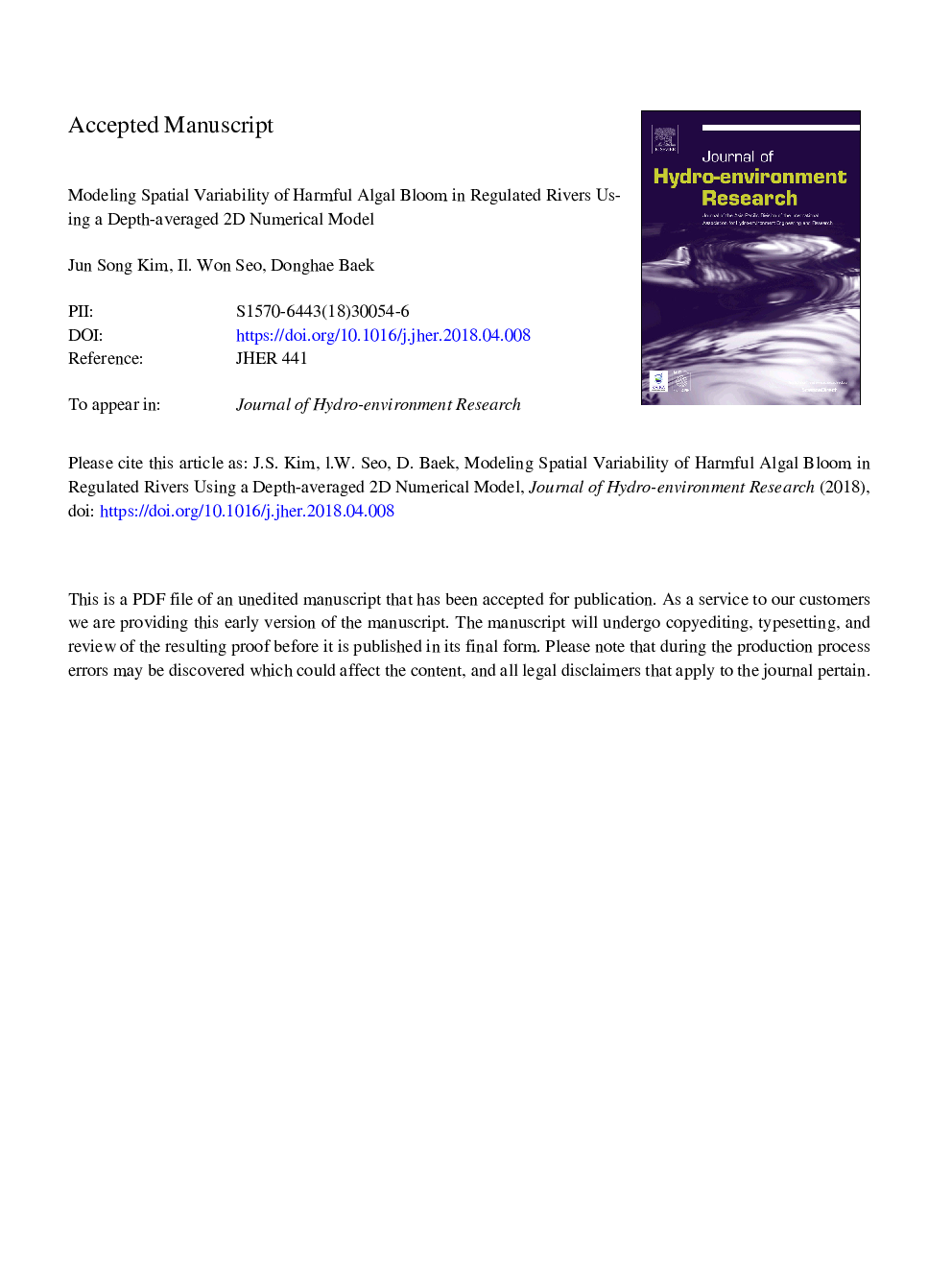| Article ID | Journal | Published Year | Pages | File Type |
|---|---|---|---|---|
| 8875445 | Journal of Hydro-environment Research | 2018 | 45 Pages |
Abstract
The depth-averaged two-dimensional (2D) model was applied to investigate the spatial variability of harmful algal bloom (HAB) in regulated rivers. This study adopted geographically weighted regression (GWR) to retrieve the spatial distribution of cyanobacterial concentration from satellite imagery data for the calibration of the 2D numerical model in the Nakdong River, South Korea. The GWR model proposed in this study yielded more accurate results compared to a conventional multiple linear regression (MLR) model. The 2D numerical model calibrated with the GWR results well reproduced a high accumulation of cyanobacteria along the shoreline where the cyanobacterial growth was preferred due to longer water residence time (WRT) associated with lower flow velocity. Simulations of HAB reduction scenarios using the calibrated 2D numerical model revealed that the blooming area and maximum concentration of the cyanobacteria in the study reach decreased drastically with an increase in inflow discharge from Gangjeong weir located upstream of the study reach. When the inflow discharge increased up to about 6 times the original level, the blooming area of cyanobacteria was almost eliminated as WRT decreased to about 37% of its original value. Furthermore, the shear velocity enhanced by the fast flow adequately suppressed the localized proliferation of the cyanobacteria along the shallow and slow flow zones in the study reach as it stimulated the lateral dispersion of water quality.
Related Topics
Life Sciences
Agricultural and Biological Sciences
Agricultural and Biological Sciences (General)
Authors
Jun Song Kim, Il Won Seo, Donghae Baek,
